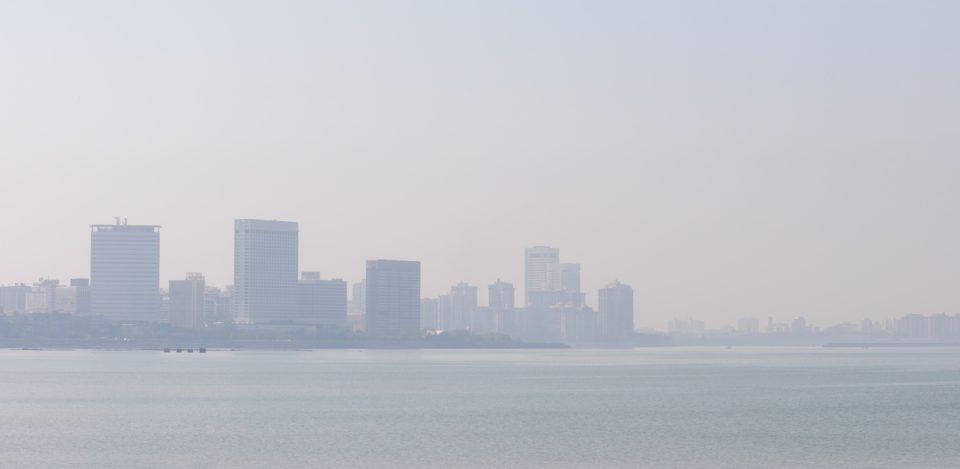
Diwali and air pollution: AQI levels vastly different in top metros

Every Diwali, there are concerns over the air quality across India, and this year was no exception. However, there is a vast difference between cities when it comes to the air quality on the day of the festival of lights and the next 24 to 48 hours.
The air quality in Delhi on Tuesday (October 25) morning was in the ‘very poor’ category but the situation was relatively better than previous years due to favourable meteorological conditions which prevented rapid accumulation of pollutants.
Also read: Delhi launches Green War Room to monitor, combat air pollution 24X7
The capital’s air quality index (AQI) stood at 326 at 7 am on Tuesday. The neighbouring cities of Ghaziabad (285), Noida (320), Greater Noida (294), Gurugram (315) and Faridabad (310) reported ‘poor’ to ‘very poor’ air quality.
People burst firecrackers despite ban
On Wednesday, the air quality in Delhi stood at 137 at 6:36 am and it worsened to 284 by 6:48 am. It was 276 at 3:07 pm. Looking at the past seven days, the best air quality in Delhi was on October 21, when the AQI was 111.
An AQI between zero and 50 is considered ‘good’, 51 and 100 ‘satisfactory’, 101 and 200 ‘moderate’, 201 and 300 ‘poor’, 301 and 400 ‘very poor’, and 401 and 500 ‘severe’.
Also read: Infants, elderly, pregnant women face greater threat from air pollution: Report
Though people burst firecrackers in several parts of Delhi despite a ban on them, the intensity appeared less as compared to the last two years.
Farm fires raged across Punjab and Haryana on Monday but the wind speed was moderately unfavourable for the transport of smoke. Hence, the contribution of stubble burning to Delhi’s pollution (around 10%) was also not “very significant”, said Gufran Beig, chair professor, National Institute of Advanced Studies, Indian Institute of Science.
Emissions from firecrackers and farm fires have contributed significantly to Delhi’s PM2.5 pollution on Diwali over the years. Their share this year was relatively less than previous years.
Also read: No data on direct correlation between health and air pollution: Govt
Another important factor behind the largely stable air quality situation was moderate wind speed and warm conditions which did not allow rapid accumulation of pollutants, preventing the air quality from plunging to the ‘severe’ zone.
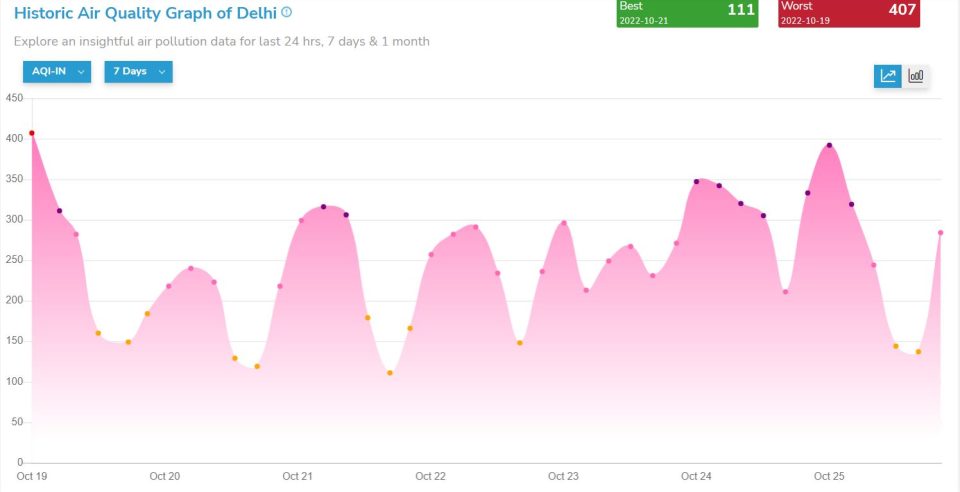
Delhi recorded a 24-hour average AQI of 312 at 4 pm on Monday — the second best for Diwali day in seven years. Before this, the city recorded an AQI of 281 on Diwali in 2018. The capital recorded an AQI of 382 on Diwali last year, 414 in 2020, 337 in 2019, 319 in 2017, and 431 in 2016, according to Central Pollution Control Board data.
On Sunday evening, the city reported a 24-hour average AQI of 259, which was the lowest for Diwali eve in seven years.
Also read: CAQM frames new policy to fight air pollution in Delhi-NCR
In Mumbai, on Diwali day (October 24), the city’s AQI was 259 in the morning, but the next day it deteriorated to 390 (very poor) at 6:38 am, and further, on Wednesday morning at 7:05 am, it worsened to 425 (severe). Later, by 2 pm, it improved, to 126, which is in the ‘moderate’ category, according to the AQI website which monitors pollution in real time in India.
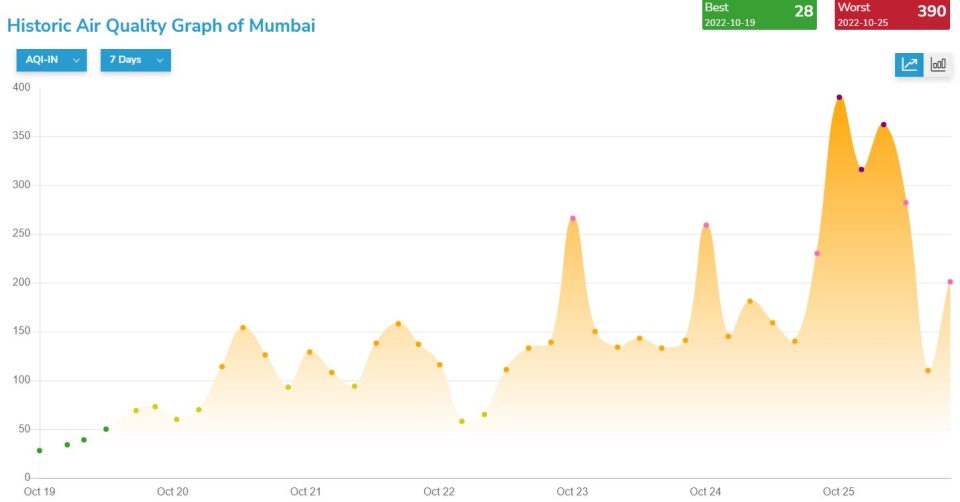
Moderate impact in Bengaluru
Down south, in Bengaluru, Diwali did not have much impact on the air quality of the city. On the festival day, Monday, the AQI was 54 at 4:05 pm; at 8:05 pm, it was 107 (moderate). It was the same on Tuesday as well at 8:05 pm. At 2:06 pm on Wednesday, the air quality was satisfactory with an AQI of 58.
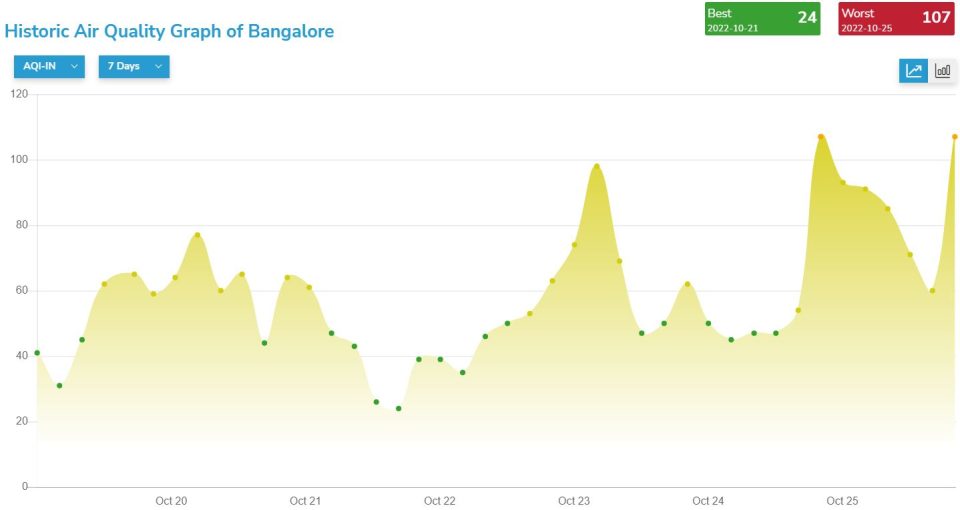
The worst AQI in the past seven days was 107, on October 25, and the best was 24 (good) on October 21.
A Bengaluru resident remarked that there seemed to be far fewer firecrackers in the city this time. Some localities were almost fully free of smoke and noise from firecrackers, he said.
In Chennai, AQI was in the severe category at 434, on Diwali (October 24) day. However, the next day morning, it improved to 276, and at night, it was 220. On Wednesday morning, it touched 292 and by 2 pm it improved to 100. For Chennai, in the last seven days, the best day was October 19 with an AQI of 37, and the worst was 434 on Diwali day.
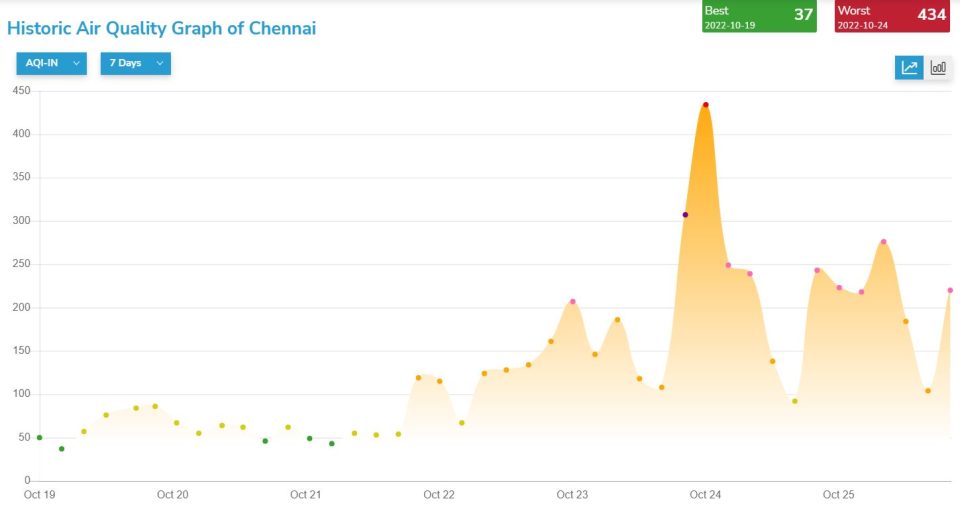
In Kolkata, AQI was 84 on Diwali night, at 8 pm. However, 24 hours later, it shot up to 252 (poor). In the last seven days, an AQI of 56, the best was recorded on Diwali day at 4 am. The worst was 290 on October 20. At 2 pm on Wednesday (October 26), AQI was 120.
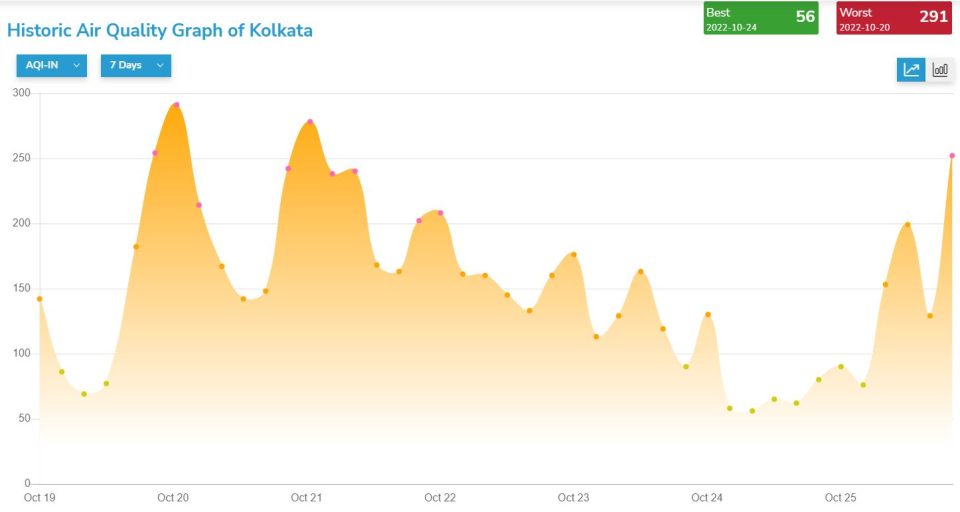
When it comes to India’s average AQI, it was 276 (poor) on October 25, the day after Diwali, and the best was 85 (satisfactory) on October 21.
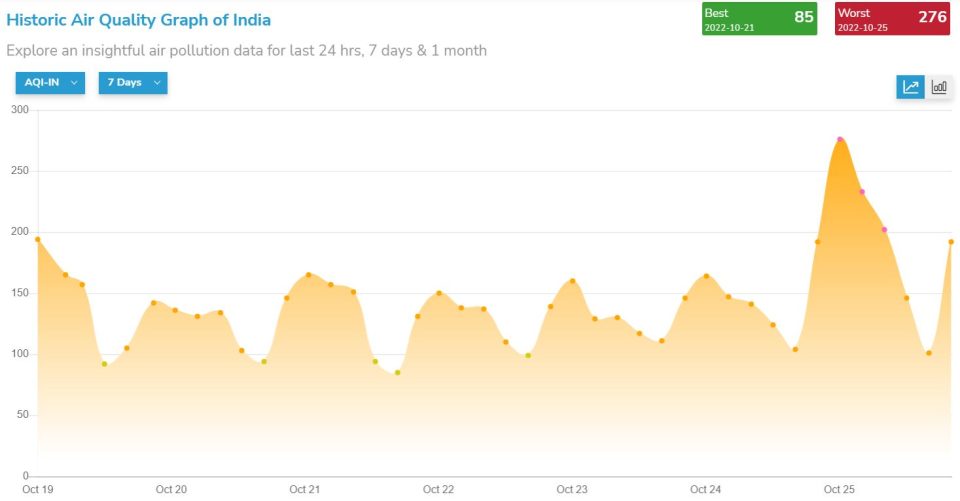
According to the AQI website’s real-time data at 2:45 pm on October 26, Delhi featured at the second spot in the list of 100 most polluted cities in the world. Indonesia’s Pontianak was the most polluted city. Meerut, Ghaziabad, Faridabad, Noida, Bulandshahr and Hapur too were in the top-10.
Also read: Delhi-NCR left gasping again as steps to check pollution find few takers
Also read: Delhi’s air quality turns ‘very poor’ on Diwali night; firecracker ban flouted
Also watch: Do green firecrackers curb pollution?


